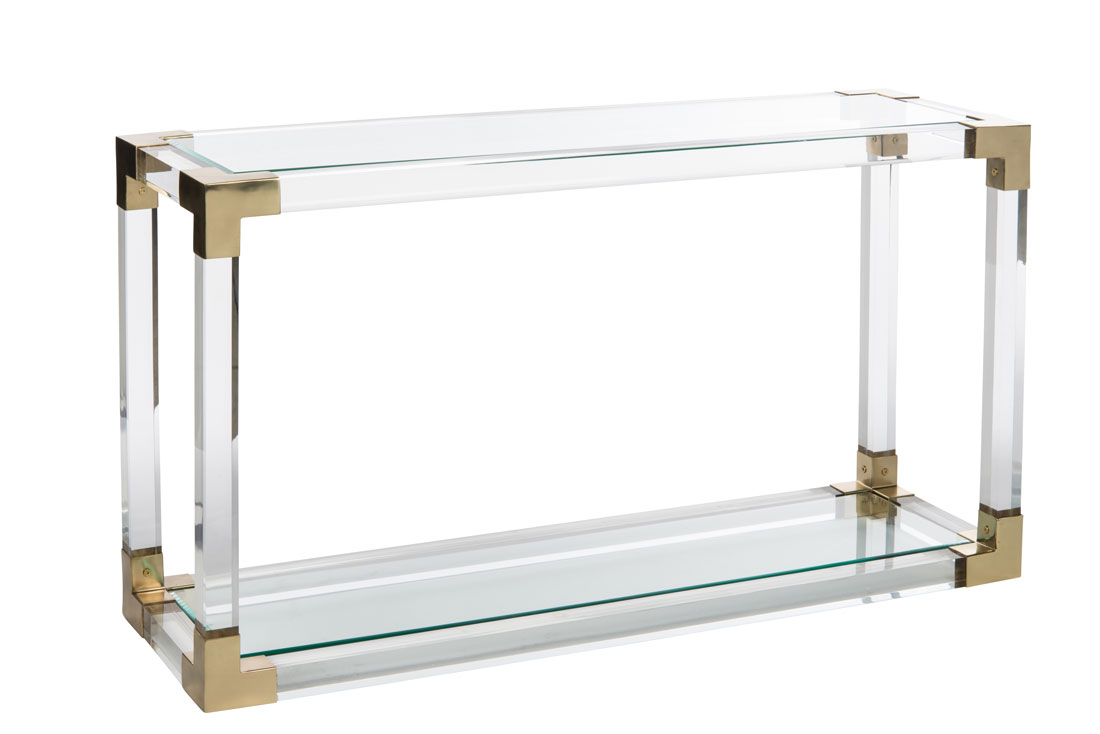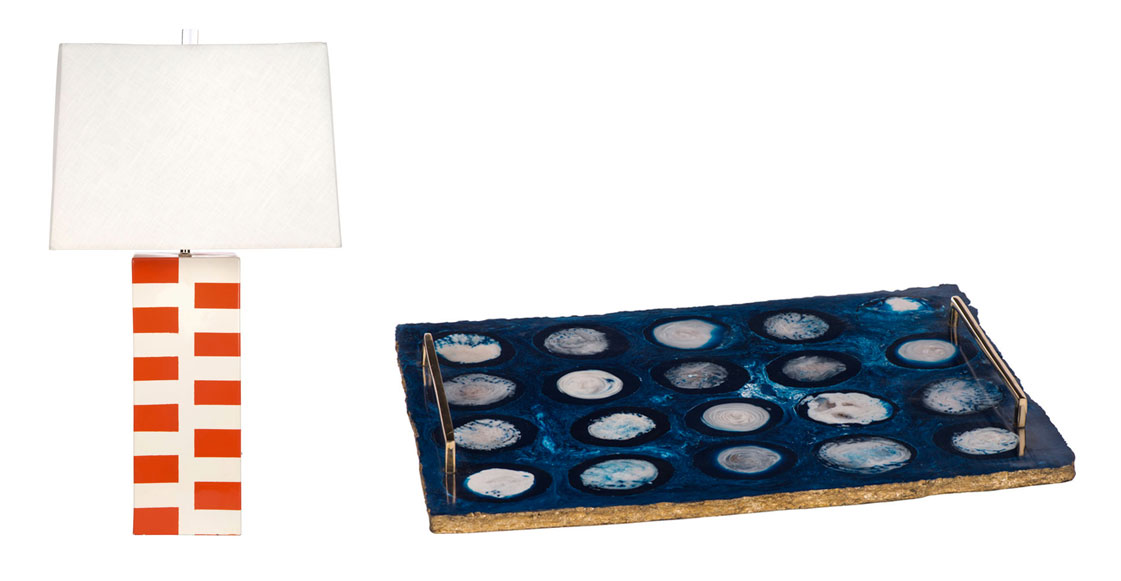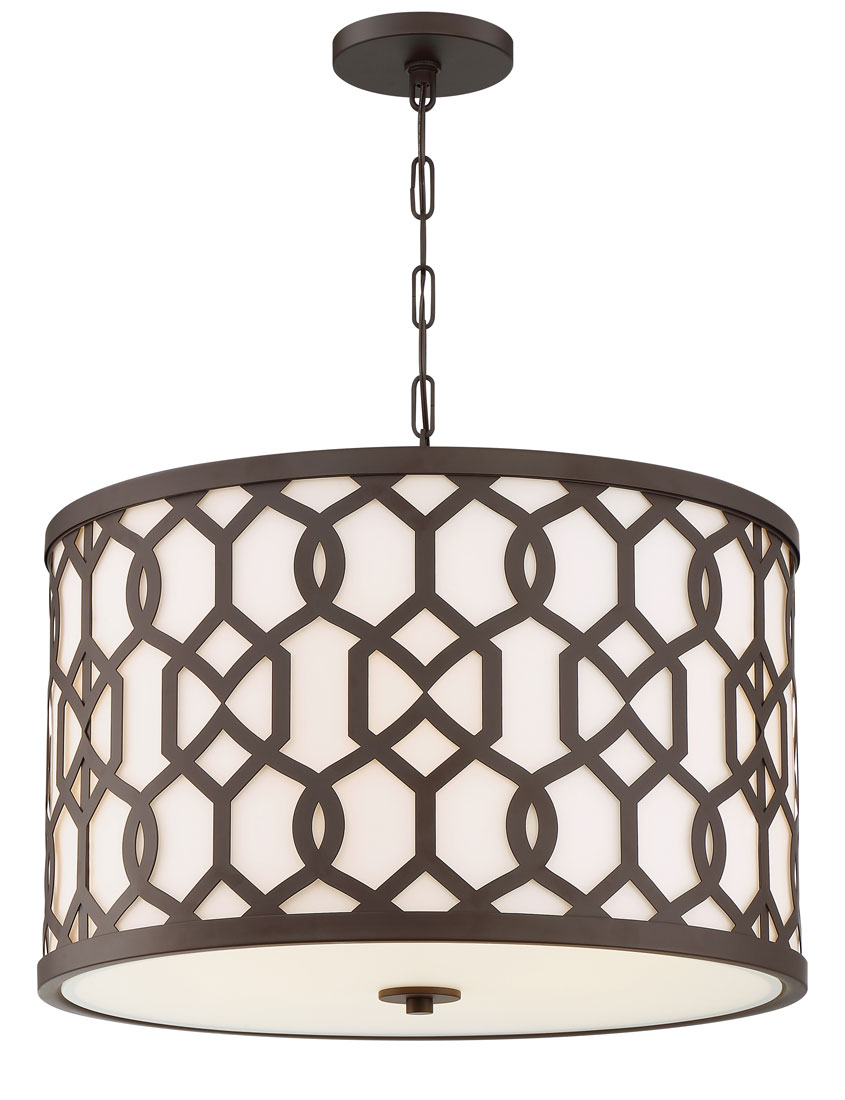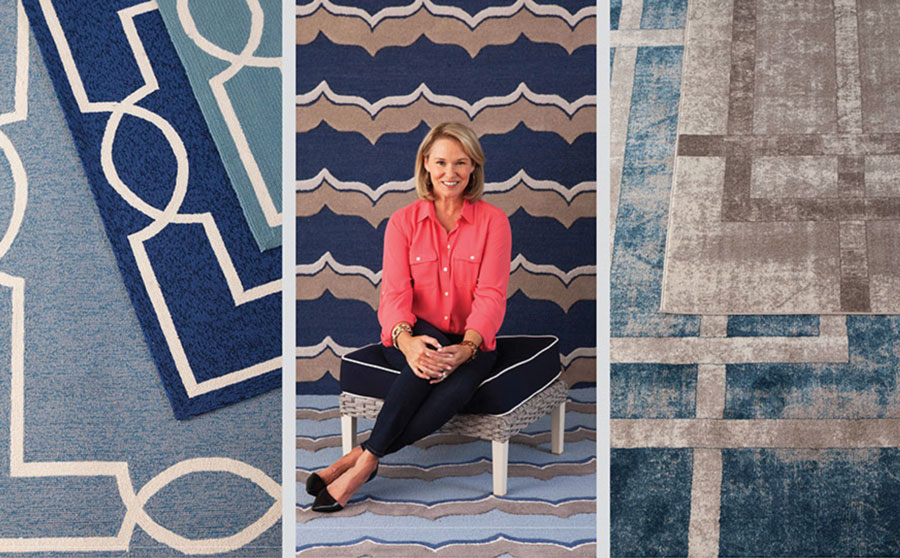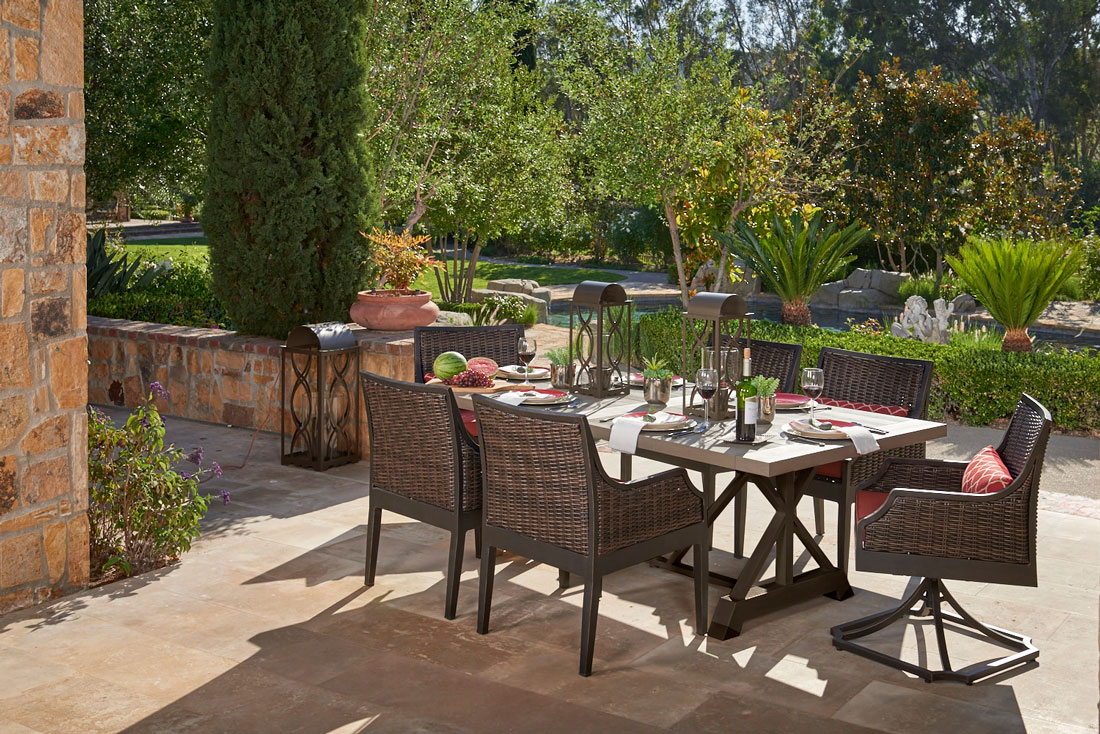Designer Spotlight: Libby Langdon – The Story Behind the Style
Meet designer, author and home makeover television personality Libby Langdon — the creative force behind New York City-based Libby Interiors Inc. Through her licensed product designs and partnerships with Bradburn Home, Crystorama Lighting, KAS Rugs and NorthCape Outdoor, Langdon is rapidly expanding her reach with furniture and accents both indoors and out.
Libby’s work has appeared in a variety of national publications including Design NJ, when she took us on a whirlwind makeover of a living room in Summit: “Makeover Takeover,” published in April-May 2016. Stay-tuned for that behind-the-scenes tour in a future blog. More recently we caught up with Libby to ask about what fuels or inspires her, her approach to design and what’s next.

Design NJ: You grew up in High Point, North Carolina, the mecca of the home furnishings world. How did that experience impact your career?
Libby Langdon: The home furnishings industry was in my blood when I was growing up. My Mom was a designer and my Dad was in textiles. I remember my Dad would come back from a business trip and he’d have these huge fabric sample cases on wheels, he’d open them up and I would pour through the fabrics — all plaids, paisleys and very traditional patterns. I loved seeing the color combinations and textures that influenced my love of fabrics today! My mom was never afraid to re-design and update rooms throughout our house. She never saw it as a big deal or a difficult production. That taught me to not get overwhelmed when working on a new design for a client. It’s all do-able and it’s nothing to get nervous and stress about. The design process should be fun!
DNJ: What was your big break or defining moment that helped launch your success in the design industry?
LL: I’d say my big break and the thing that got me into interior design was when I auditioned to be a host on a makeover TV show, Design Invasion on FOX. They found out about my furniture/design background in North Carolina and asked me to audition as the host AND the interior designer. I ended up getting the show and traveled across the country for the next eight months, making over rooms that I’d never seen before for $6,000 in just 12 hours. It taught me so much about interior design but even more about how people live and what they really want. I would want the biggest reaction possible for the reveal and give them a design THEY would like. It wasn’t about me. I wasn’t going to be living there, so they needed to like it. That’s something I do with clients now. I don’t go in and force my Libby Langdon style on them. I give them ideas I think they would like and then we craft a design that’s uniquely theirs, one that announces their own personal style. It also taught me to be flexible, and how to be a problem-solver. It’s all happening so quickly and things inevitably go wrong. You learn how to go with the flow and make it work. That was what put me not only on the path of design but also gave me my start in TV and media for interiors.
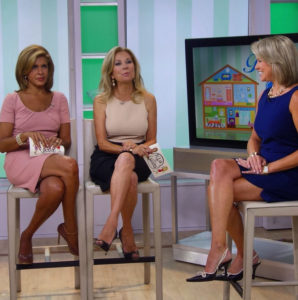
On set at the Today Show with Hoda and Kathie Lee
DNJ: How would you describe your design aesthetic?
LL: “Easy, Elegant, Everyday Style.” The ‘easy’ comes from my accessible and simple approach to design. The process should be fun while you’re doing it and rewarding when you are finished. The ‘elegant’ is you can have a comfortable and functional design but it can also be stylish and beautiful. And the ‘everyday’ represents the majority of clients I work with. They have kids, pets, and friends who drink red wine. It’s all about creating spaces that work for life’s realities and making sure that folks feel like they are living in a home and not a showplace. It’s what works for your family’s needs and it can look fabulous at the same time!
DNJ: Your first licensed collection was with Braxton Culler. How did that develop, define your signature style, or lead to additional licensing agreements?
LL: I designed my own upholstery collection for Braxton Culler for six years and I actually grew up in High Point living down the street from the Culler family. I no longer work with them and I’m in talks to work with another company but I used their furniture in my design projects for years.
I approached Brack Culler, Braxton’s son, about doing my own collection for them, something with sleeker lines and a more updated design style. It was a great fit at the time and allowed me to showcase that I could design a collection that would sell out in the marketplace and start to let people see the types of products I wanted to design. I feel everything I design shares the common thread of my signature “Easy, Elegant, Everyday Style.” My designs are based on the countless hours I work with clients and consumers across the country, listening to how they really live and what they really want. I think I’m making my mark by creating items that offer great style, value and are functional for today’s modern lifestyle. I like to think of it as product with a purpose!
I think another aspect of what I do that’s different is the way I share interior design inspiration and information with people. Whether in my book about Small Space Solutions or doling out design tips and tactics on makeover TV, I like to arm people with as much home style advice as possible. This accessible approach has served me well when it comes to promoting the pieces I design and “telling the story.” When I’m able to share my design perspective that allows me to seek new partnerships and find what’s a good fit for me. I don’t want to partner with a company that’s already producing looks that I would want to design. That doesn’t seem to help them or me. It cannibalizes their existing business rather than bringing them new design options and introducing a new audience.
DNJ: How do you juggle your own client residential and commercial work with everything else on your plate?
LL: I’m a big list maker and I work pretty much all the time but I really love the one-on-one time with clients. I would never want to stop working on my residential/commercial design projects. It also keeps me on the frontlines of what people are liking now. It’s a form of research and development for the products I design, and that information is invaluable. The time balance is tricky. If possible, I try to work on product design, (sketches/product descriptions/color renderings/notes on CAD and measurements/ promotional materials) on the weekends. Inevitably things come up during a weekday where I need to pivot and address the issue. I just try not to beat myself up if a day gets gobbled up with product design problems instead of client work. I will eventually get it all done.
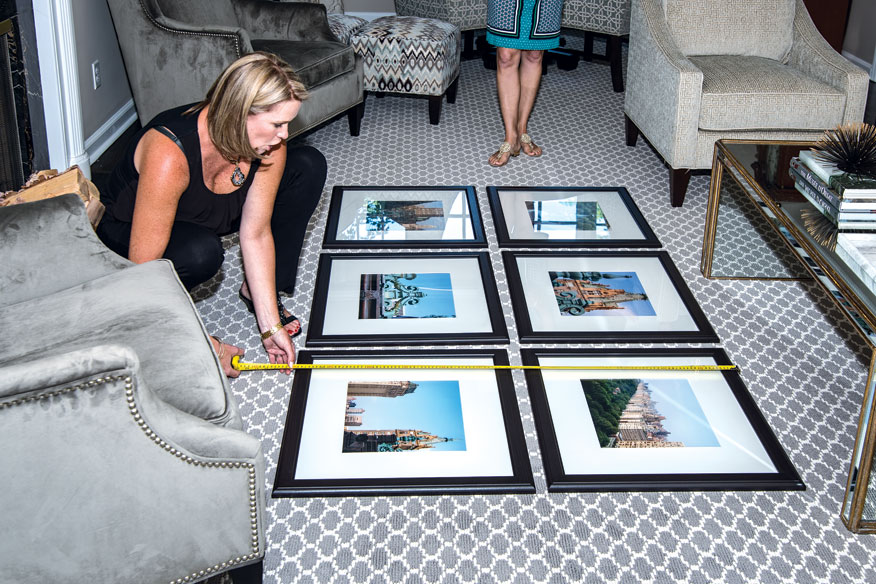
On-site at a client’s living room makeover in Summit. Measure twice — hang once.
DNJ: Would you say your expansion into outdoor furniture and accents filled a void in the marketplace? How did you bring your indoor fashion-forward looks outside?
LL: I’m seeing the outdoor living sector as one of the fastest growing in the home furnishings industry today. I encourage folks to think of their outdoor spaces as an extension of their indoor spaces and to treat it as if they’ve built an addition and gained valuable square footage. I also like the idea of blurring the lines between indoor and outdoor décor. With my collection of outdoor furniture for NorthCape, so many people comment that the furniture looks like indoor furniture and that’s by design.

NorthCape sectional, fire table and KAS Rug
LL: The best way I’ve created dynamic exteriors is to approach the design the same way I would an interior living space. I mix fabrics, patterns, materials, and collections to add visual interest to the overall design. I would never use all the same furniture collection and all the same cushion fabric on the inside of someone’s home so why would I do that in an outside space? Avoiding ‘matchy-matchy’ and creating an eclectic mix adds depth and dimension to any outdoor space and helps to achieve a fashion-forward look. The fabulous introduction of fire/heating elements for consumer use, not just commercial, has extended the usable time of outdoor rooms and exterior spaces.
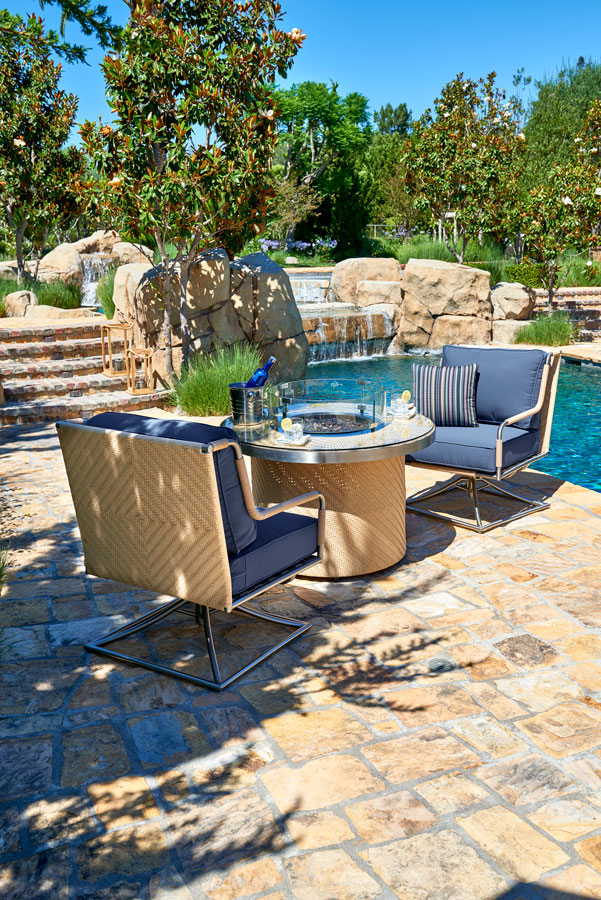
Weston Chat with fire table for NorthCape
DNJ: What are some of the most exciting changes you’re seeing in the way we live outdoors?
LL: People are realizing even if they live in cool weather climates they can extend the time they enjoy their outdoor spaces far beyond Memorial Day to Labor Day. It’s a very exciting time to have products in the outdoor category and I love when I get the chance to show my outdoor furniture for NorthCape, my outdoor rugs for KAS and my outdoor lighting for Crystorama altogether. It’s a complete outdoor room design, ceiling to floor. Today it’s possible to create exterior spaces with all of the same creature comforts we have in our interior spaces. Full, complete floor-to-ceiling designed spaces, rugs, chandeliers, outdoor lamps, wall hangings and occasional small moveable furniture items make an outdoor space feel just as comfortable and complete as any indoor space!
DNJ: When designing a room where you do typically start — furniture, fabric, rugs or color palette?
LL: I usually begin with 20 questions with the client, asking them what colors do they like, what colors do they hate, how do they entertain and what are the needs of their family and do they have a favorite vacation spot or any Pinterest or Houzz boards of looks they like. I think it’s best to gather as much information ahead of time to help the process move quickly and smoothly! If the client isn’t sure of a look or style they want then I come up with color palette choices and we pull together different color stories to show them: groupings of fabrics each with patterns, solids, and neutrals. The next most important step is working on the furniture layout and once I have the placement just right I can start sourcing furniture that works proportionally. Then I fill in with rugs, lamps, artwork and accessories and all the finishing touches that make the room feel complete and totally finished.
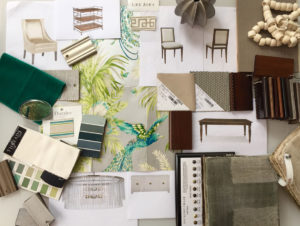
Creating an inspirational mood board for a client in complementary colors, shapes, patterns, and textures
DNJ: What is the best piece of design advice you’ve ever received?
LL: I don’t think it was advice I ever got but it was more a discovery as I started working in design with all sorts of clients. I would say my best advice for anyone is to choose items YOU want, not what a designer says you have to have. You don’t have to have anything, it’s what you are comfortable with and want to live with. There are a million choices of fabrics, furniture and décor pieces … It’s all out there for the taking and it’s just about finding the designer that will connect with you and help you craft your own personal design story that will resonate for years to come!
DNJ: Clients turn to you for ideas and inspiration. What or whom inspires you?
LL: I’m most inspired when I have the chance to travel and get out into the world and experience different places, cultures, and styles. I have a lot of things on my plate so this is sometimes difficult to pull off with my hectic schedule. If I can’t take a trip I head to a museum. I find I can discover interesting furniture shapes and styles, unexpected and dynamic color combinations and unusual mixing of materials. I can see all of this in a painting, ancient jewelry, and textile design and even in sculpture. For me, it’s really about being open to finding inspiration in all forms and then figuring out a way to translate it to product design in an updated way.

